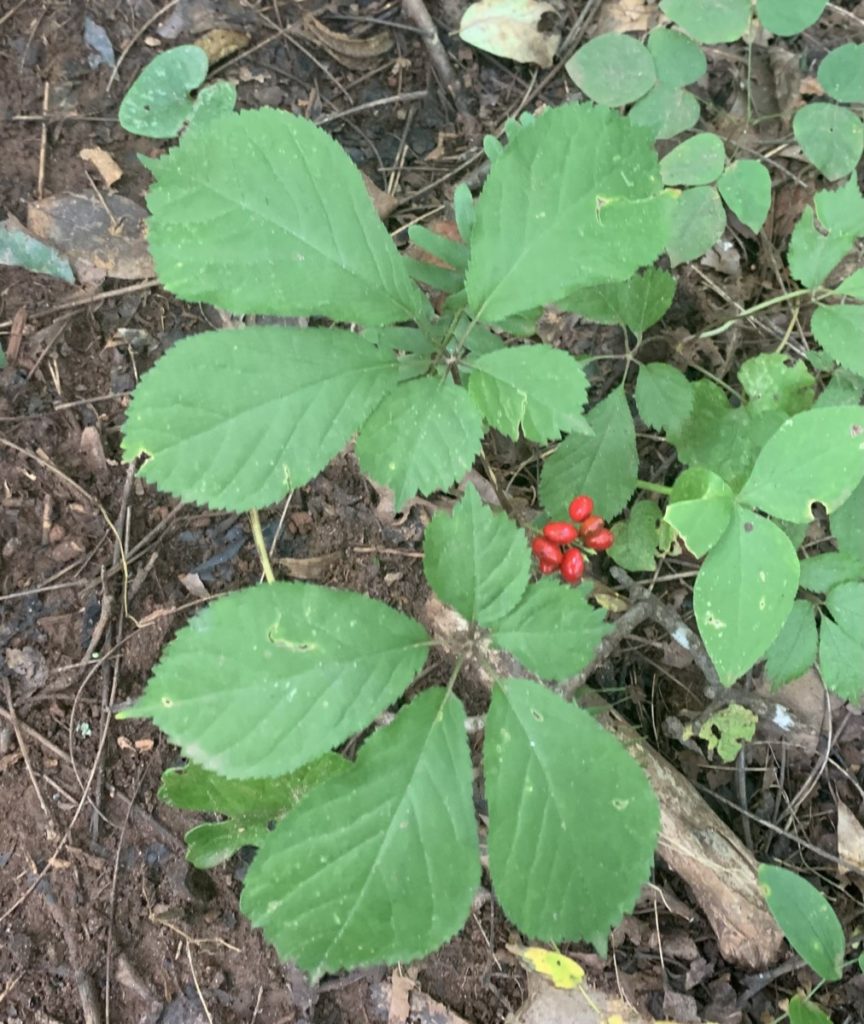Ginseng is a plant that has long had an important place in Appalachia. It is important economically and culturally. Unfortunately, there is less and less ginseng growing in the wild. Let’s talk about ginseng, some of its history, and how to start your own ginseng patch.
The market for American ginseng started in the 1700’s. In Asia ginseng has been used for thousands of years. It’s been used as a dietary supplement and in herbal teas. There are many traditional medicine uses of ginseng. Many of the health claims about ginseng are not supported by clinical studies. In spite of this ginseng is still incredibly valuable because of its use in Asia. The root of the plant is what is sold, which means that harvesting kills the plant. Wild ginseng roots can sell for hundreds of dollars per pound, depending on the quality of the root. Wild ginseng roots have more character to them. They will have more lines across them and usually have splits in them that make them look like legs. Cultivated ginseng is not as valuable as wild ginseng, but it can still be sold.
The native range of ginseng is eastern north America from Canada down to North Georgia. Ginseng’s status in Georgia is rated as vulnerable. Ginseng is very rare to find in the wild. This is thought to be because of habitat decline, wildlife eating it, its slow reproduction, and the demand for the root. There are stories from the early 1800s of bundles of ginseng the size of hay bales being floated down the river to be sold at market. Ginseng at that scale does not exist anymore.
The Georgia Department of Natural Resources regulates the harvest and sale of ginseng in Georgia. Growers and dealers must be registered. Ginseng can only be harvested from September 1 through December 31. This is to give plants an opportunity to put on seeds before they are harvested. Only plants with 3 or more prongs can be harvested. As plants age they gain more prongs, or leaves. By only harvesting plants with 3 prongs or more, you don’t harvest plants that are too young to reproduce. When you harvest ginseng, you must also plant any berries that are on the plant. This is to encourage new plants of ginseng to start growing. No ginseng may be harvested on state owned land or national forest at this time.
Ginseng can be grown on private property. You want to look for a place that has at least 1000 feet in elevation, slope of > 30%, and has a north, east, northeast, or northwest facing aspect. Ginseng must be grown in the shade. About 75% shade is what is needed. Hardwoods are better than pine. Some indicator plants to look for are mayapple, bloodroot, trilliums, foam flower, ferns, and cohosh. When planting seeds keep in mind that they may take two or more years to germinate. Once plants are growing it can take 8+ years before they reach harvest age. Ginseng can be a valuable crop, but it’s best to temper expectations because there is a lot that can go wrong in 8+ years. Wildlife damage, washout, theft, diseases, and insects can all take their toll.
If you have questions about ginseng contact your County Extension Office or email me at Jacob.Williams@uga.edu.
